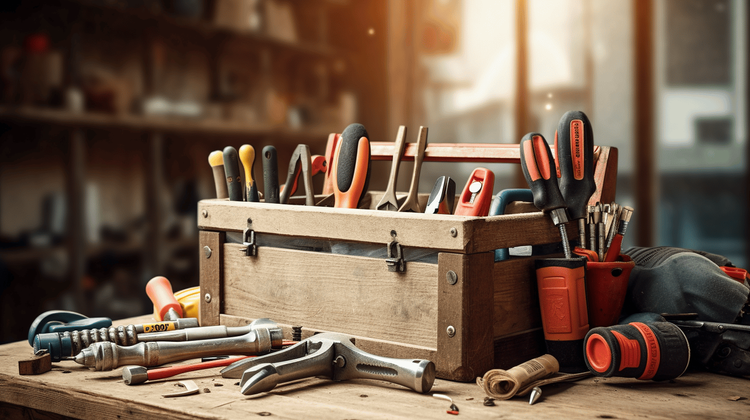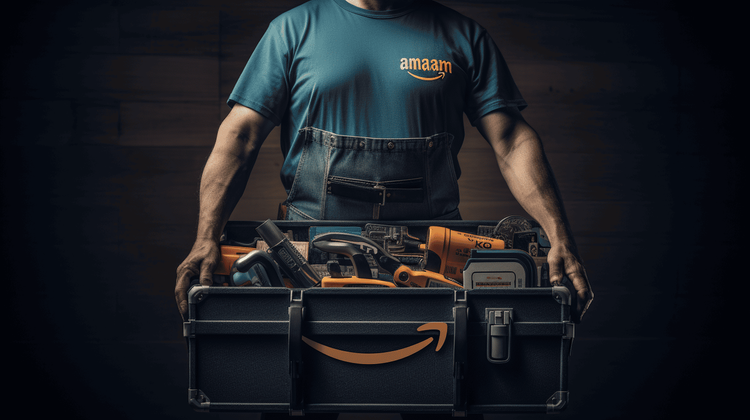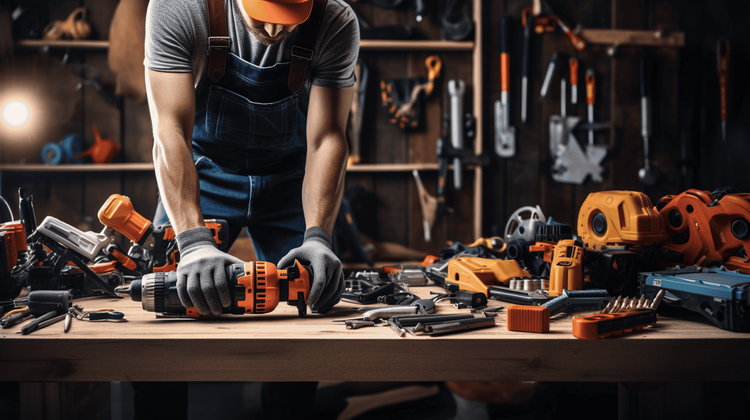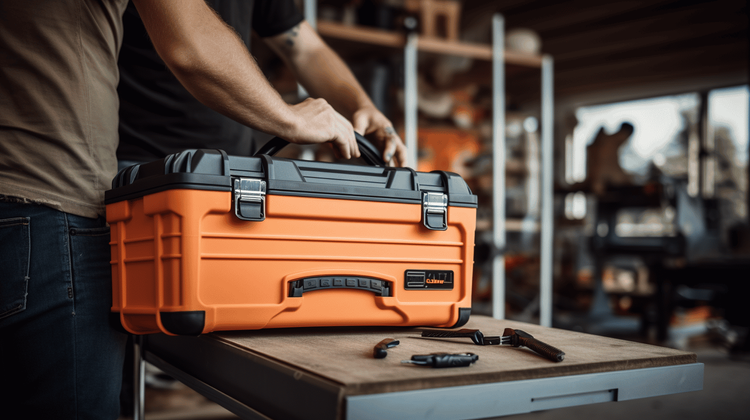The Wise DIYer: How to Build an Affordable Tools Collection
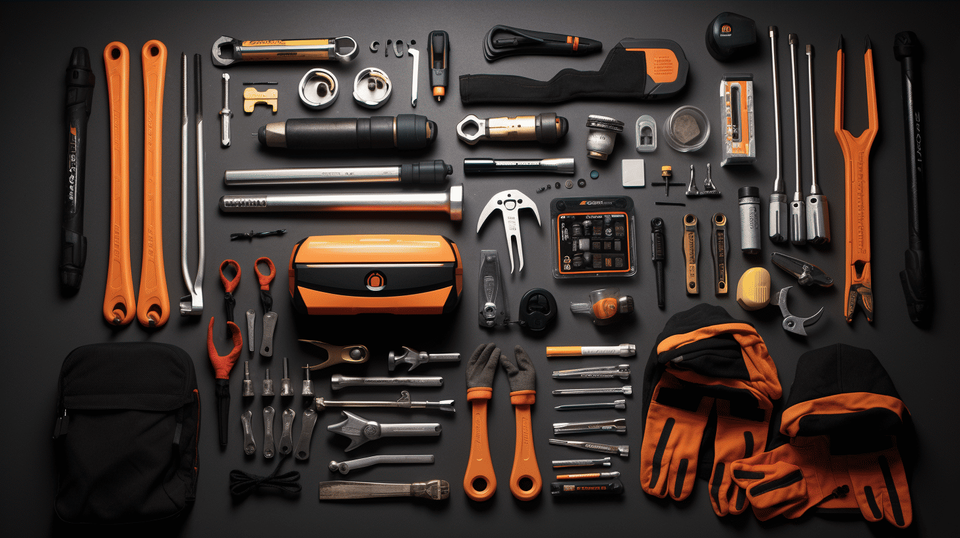
🛠️ There's a certain thrill that comes with building something with your own two hands. It could be anything, from a simple piece of furniture to a complex mechanical gadget. But any DIYer will tell you, the magic happens only when you have the right tools at your disposal. So, welcome, budding DIYers, let's embark on an insightful journey on how to piece together your very own affordable tool collection.
When you roll up your sleeves and get down to some good, old-fashioned DIY, it's not just about the end product. The excitement, the creativity unleashed, and the satisfaction of a job well done, it all multiplies manifold when you've got the tools that fit just right in your hands.
But here's the thing - building a tool collection need not be an expensive affair. Surely, you don't want to burn a hole in your pocket even before your project has taken off, right? This guide will walk you through the process of building a versatile, effective, and above all, affordable tool collection. From understanding the significance of a well-stocked tool kit to finding the best deals and ensuring your tools stay in top condition for years, we've got it all covered for you. After all, every great DIY journey begins with the right set of tools! 💪🔧
Importance of Having a Tool Collection
Tools are an essential part of our daily lives. They come in various shapes, sizes, functions, and most importantly, they generally make life easier. As we step into adulthood, we gradually realize the importance of having a basic tool collection at home. 🧰
Efficiency in DIY Projects
First and foremost, having the right tools at hand significantly increases efficiency when embarking on DIY projects. Have you ever tried to assemble flat-pack furniture with nothing more than a table knife and sheer determination? 🤔 If you have, you'll understand the undeniable difference that a proper set of tools can make.
- Ease of Assembly: A practical illustration of this is the assembly of a simple bookshelf. Suppose you tried hammering the nails manually, as opposed to using a nail gun or a power drill; you would eventually get the job done, but at the cost of much time and physical strain.
- Quality of Work: Besides saving time and energy, using adequate tools also assures a certain quality in the outcome of your DIY project. Imagine trying to install a floating shelf without a level! 🪚 Not the ideal picture, is it?
Cost-effective in the Long-run
It might appear counterintuitive at first, especially considering the upfront cost of acquiring these tools. But bear with us; in the long run, having a collection of standard tools at home proves to be quite cost-effective.👌
- Durability: Tools, particularly good quality ones, are built to last. You may have to replace them every so often, but generally, good tools will last you for years or even decades.
- No More Handyman Fees: And more importantly, with the right tools, you can deal with some minor household repairs yourself without having to pay someone to do it.
Skill Development
Lastly, similar to how spicing up your meals teaches you about different flavors, using a variety of tools can help you develop and better your skills. As you progress with your tool-based DIY projects, you become more skillful, resourceful, and independent. Recognize the capacity of each tool, master its use, and soon you'll see that the possibilities with DIY projects are endless.🔧
Having a tool collection is more than just the convenience of having a tool at hand when you need one. Tools multiply efficiency, save money in the long run, and encourage skill development. So next time when you are at the hardware store, do not think twice before purchasing that toolset. After all, a well-equipped toolbox is the first step to becoming a successful DIYer. 👍
Essential Tools for a DIYer
Who hasn't found themself in the midst of a DIY project, only to realize they lack the right tool for the job? While every DIY task may demand special tools, there are a handful of basic necessities any at-home handyman or handywoman should have in their toolbox. These are the gadgets that will give you a head-start on most projects. 🛠️
- Hammer: As fundamental as it gets, a hammer is versatile and indispensable. From hanging pictures to building furniture, the trusty hammer is a DIYer's reliable friend.
- Screwdriver: This is another foundational tool. A high-quality set with both flathead and Phillips head options will serve you well across a wide range of projects.
- Pliers: Essential for gripping and cutting, pliers can also work to bend, twist, or hold materials when your hands simply won’t do.
- Tape Measure: Don't let anyone fool you - guesstimation isn't an official measurement unit! Ensure you've got an accurate tape measure on hand for precise measurements.
- Utility Knife: From opening boxes to trimming wallpaper, a sharp utility knife is a handy tool to have in your DIY arsenal.
- Power Drill: A fair warning, once you start using a power drill, you may get addicted! This device can save you time, energy, and hand cramps compared to manual screwing and drilling.
- Wrench: Loosen or tighten nuts and bolts like a pro with a good wrench set. You never know when you'll need these bad boys.
- Level: Dubious about hanging that painting straight or frustrated with wobbly furniture? A simple level can rectify these pesky misalignments.
- Clamps: Hold it right there! Or rather, let clamps do the holding when you need an extra hand to keep things steady.
So there you have it – a comprehensible list of all the essential tools any DIY enthusiast should keep at the ready. Owning these items can make the difference between a smooth, enjoyable DIY time, and a stressful, stop-and-start experience. Time to gear up and tackle your upcoming DIY project with the confidence of a seasoned pro! 🛠️🧰👍🏼
Building a Budget for Your Tool Collection
Building a comprehensive tool collection is a worthy investment that guarantees efficiency and convenience. However, it can be intimidating due to the varied prices of tools and the sheer size of some options. But what if you could build a tool collection without bursting your pocket?
In this budget-conscious society, planning your expenses wisely while building your dream tool collection is no longer a pipe dream. Here's how you can take on this task systematically.
Analyzing Your DIY Needs
Before you go out and splurge on that fancy hammer drill or circular saw, it's essential to analyze your Do-It-Yourself (DIY) needs. Not all of us require heavy-duty power tools. For some, a simple set of screwdrivers, a sturdy hammer, or a cordless drill can do the trick. 🧰
Consider these steps to identify your needs:
- Make a list of the projects you plan to handle
- Identify the essential tools needed for these projects
- Prioritize these tools based on their frequency of use
- Classify them by their urgency: immediate, short-term, and long-term needs
By conducting this simple needs analysis, you'll have a clear idea of what your toolbox should contain, saving you from impulsive and unnecessary purchases.
Crafting a Budget Plan
After identifying your tool needs, the next step is crafting a budget plan. Everyone's fiscal responsibility differs, so what works for you might not necessarily suit someone else.
Here's how to devise a budget plan:
- Establish your budget limit
- Allocate specific amounts to immediate, short-term, and long-term needs
- Look out for deals and offers to maximize your budget
- Consider investing in quality over quantity
One golden rule in tool shopping is not to compromise quality for price. High-quality tools can be an investment, but their durability gives you a worthwhile return in the long run.
Periodic Investment Strategy
Building a tool collection doesn't happen overnight. It takes years to accumulate, and that's where the periodic investment strategy comes in handy. Instead of buying tools all at once, purchase them gradually, thereby spreading out the cost over time.
This scheme encourages discipline and strategic spending. It allows you to invest consistently on a monthly or yearly basis, steering clear of unplanned or impromptu spending.
"Rome wasn't built in a day, and neither is your tool collection."
There you have it! By carefully analyzing your needs, crafting a budget plan, and adopting a periodic investment strategy, you can successfully build your tool collection without straining your finances. Remember, it's about working smart, not hard. Building a tool collection should be a rewarding experience, not a burdensome task. So go on, indulge in your DIY projects with peace of mind! 🔧
Where to Look for Affordable Tools
If you're starting a new construction project, or maybe you're an amateur DIY-tinkerer, finding the most suitable and affordable tools might seem a challenging task. But don't worry! There are plentiful opportunities out there where you can secure quality yet affordable tools without burning a hole in your pocket. Here are some of the places you may want to check the next time you're looking for tools.
Yard Sales and Thrift Stores
Don't underestimate the treasure trove that yard sales and thrift stores can be. Here, you can often find pre-loved tools with plenty of life left in them that are available for a fraction of their initial retail price.
- Pros
- Affordable price ranges
- More classic options
- Chance of finding rare treasures
- Cons
- May require cleaning and revamping
- Might not always find what you're looking for
"One person's trash that's another one's come-up," as the famous Macklemore line goes, perfectly fits in the context of hunting for affordable tools in yard sales and thrift stores.
Online Platforms
Many online platforms offer second-hand tools, often at affordable prices. Websites like eBay and Craigslist, as well as apps such as LetGo and OfferUp, are rich resources to explore. Furthermore, social media marketplaces like 'Facebook Marketplace' frequently offer budget-friendly deals.
- Pros
- Wide range of product offerings
- Accessible and convenient to use
- Often comes with ratings and customer reviews
- Cons
- Can't physically inspect before purchase
- Possible delivery charges
In today's digital age, online platforms are a great answer to the question of where to look for affordable tools so long as they are used smartly and cautiously.
Hardware Store Sales
Another great spot to look for affordable tools is your local hardware store. These stores regularly run sales during holidays and end-of-season clearances. Sign up for their newsletter or join their loyalty program to stay informed.
- Pros
- Ability to physically inspect tools
- Can consult with knowledgeable store staff
- Guaranteed quality
- Cons
- May not be as cheap as online or yard sales
- Limited store physical space means limited stock
Scoring quality, affordable tools at a local hardware store sale is always satisfying, especially knowing you're supporting a local business.
In the riveting search for affordable tools, always keep in mind the right balance between price, quality, and necessity. It's not always about finding the cheapest option, but rather finding the tool that's just right for the job, from a source that suits your needs and budget. Happy tool-hunting!
Tool Maintenance and Longevity
When it comes to DIY projects or those much-needed home improvements, nothing can slow you down quite like a dull or rusty tool. Whether it's a mediator drill or a humble screwdriver, maintaining your tools in tip-top condition is an essential task for anyone from professional carpenters to weekend warriors. The longevity of your precious tool kit depends on regular maintenance - a process that involves proper storage, habitual cleaning, preventive measures against rust, and timely repair. Let's dive into how you can effectively care for your tools to keep them functioning for years to come.
Proper Storage
Now, don't throw your tools around willy-nilly! 🛑 After each use, make sure they are carefully stored to prevent any unnecessary wear and tear. Here are a few key pointers:
- Clean and dry the tools before storing them to prevent rusting.
- Use toolboxes, toolbelts, or pegboards for organized storage.
- Always store sharp tools securely to avoid accidents.
Regular Cleaning
Keeping your tools clean goes a long way to ensuring their longevity. 💪 This doesn't just mean wiping them down after use, but a deep clean every now and then. Here's how you can get your tools sparkling:
- Use a simple, damp cloth to wipe away any visible dirt or grime.
- For stubborn gunk, use a wire brush or an old toothbrush. They're perfect for getting into those hard-to-reach corners.
- Once clean, make sure to dry your tools thoroughly to avoid rusting.
Preventive Measures for Rust Avoidance
There’s nothing worse than picking up a tool and finding it covered in rust. 😖 Rust not only damages the tool physically, but it also hampers its performance, leading to long-term issues. Here are a few tricks to avoid the dreaded rust:
- Store your tools in a dry, well-ventilated place to avoid the humidity that fosters rust.
- Regularly oil all metal parts of the tools - small drops of WD-40 can work wonders here.
- Consider using silica gel packets or dehumidifiers in your storage area.
Tool Repair
Like anything else, tools will experience wear and tear over time. This doesn't mean that they're ready for the scrap heap just yet though. 🛠️ Regular inspections and timely repairs can drastically extend their lifespan. Here's what you need to keep in mind:
- Keep an eye out for any loose parts, cracks, or signs of damage.
- Regularly sharpen any blades or cutting edges.
- Don't be afraid to replace worn-out components, like drill bits or saw blades, instead of buying a whole new tool.
And there we have it: our comprehensive guide to tool maintenance and longevity. Keep your tools clean, keep them dry, but above all, keep them loved! Your trusty toolkit will thank you for it. Remember, the lifespan of your tools is in your hands!
Conclusion
Crafting the perfect tool collection doesn't entail breaking the bank or splurging on tools you may never use. With careful planning, strategic purchasing, and meticulous maintenance, you can assemble an affordable collection that caters to your urgent DIY needs while also fostering your skill development. Not to forget the importance of keeping these tools organized and reachable at all times. A good option for that is investing in a product like the Bit Holder Keychain from Ultra Handy that makes screwdriver bits easily available for your power drills.
The key is to take small steps. Start with the basic tools, gradually expanding your collection as your skills and DIY project needs grow. Remember, the value of a tool isn't determined by its price tag but by the number of times it gets used.
Doing things by yourself is an expression of self-reliance and creativity. Armed with the right tools, you're not only equipped to tackle an extensive range of jobs around your home or workspace, but also on a journey of continuous learning, maturing with each project you undertake. So, head over to Ultra Handy and take the first step towards building a DIY tool collection fit for a professional, yet tailored for a DIY enthusiast. 👍
Frequently Asked Questions
- What are the essential tools every DIYer should have in their collection?Some essential tools every DIYer should have in their collection include a hammer, screwdriver set, tape measure, adjustable wrench, pliers, utility knife, level, and drill.
- Where can I find affordable tools for building my collection?You can find affordable tools for building your collection at various places such as hardware stores, home improvement centers, online marketplaces like Amazon or eBay, and even garage sales or second-hand stores.
- Should I prioritize buying cordless or corded power tools for my DIY projects?It depends on your specific needs and preferences. Cordless power tools offer greater portability and convenience, while corded power tools generally provide more power and continuous operation. Assess your projects and choose accordingly.
- How can I maintain and extend the lifespan of my tool collection?To maintain and extend the lifespan of your tool collection, regularly clean and lubricate your tools, store them properly in a dry and organized manner, use them correctly for their intended purpose, and periodically check and replace any worn-out parts.
- Are there any tools or accessories that can help me save money on my DIY projects?Yes, investing in versatile tools like a multitool or a combination set can help you save money as you won't need to purchase multiple specialized tools. Additionally, learning basic repair skills can also save you money on calling professionals for minor fixes.
